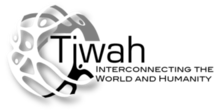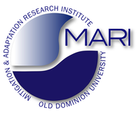Information Relevant to White Paper and Workshop
Information relevant to the workshop and white paper will be made available here as it becomes available. Information that is not public can be accessed in the Workspace. If you do not have access to the workspace, you can register here here. You may have to send a request to Hans-Peter Plag before you can register.
Meetings, Meeting Reports, Assessments
The SIDS Symposium on "Implementing the 2030 Sustainable Development Agenda and the SAMOA pathway in Small Island Developing States - SIDS: Equipping Public Institutions and Mobilizing Partnerships" was held on 21-23 February 2017 in Nassau, Bahamas. See the Symposium page for details. The Informal Communique and the Summary are relevant to the workshop.
CANARI has a number of relevant reports, which are available on their web page. The contribution of CANARI to the SDG implementation is described here ...
The UN Economic Commission for Latin America and the Caribbean (ECLAC) produces reports of relevance for the workshop. In particular, the ECLAC Subregional Headquarters for the Caribbean (html) has relevant documents on-line. Of particular interest are the Focus issue 3 of July - September 2017 on Sustainable Development Goals Implementation in the Caribbean (pdf) and the Focus issue 1 of January-March 2016 on Monitoring the SDGs in the Caribbean (pdf). Another highly relevant document is the “Report of the Caribbean symposium on mainstreaming the Sustainable Development Goals in national development planning,” which can be downloaded from the repository together with relevant data. Access pdf.
Relevant Documents and Videos
Blue Economy and Small Island States: The report “THE POTENTIAL OF THE BLUE ECONOMY — Increasing Long-term Benefits of the Sustainable Use of Marine Resources for Small Island Developing States and Coastal Least Developed Countries” is the product of a collaborative effort amongst relevant bodies and agencies of the United Nations system and other stakeholders, which was led by the World Bank Group and United Nations Department of Economic and Social Affairs (DESA). The Executive summary states:
“This report was drafted by a working group of United Nations entities, the World Bank, and other stakeholders to suggest a common understanding of the blue economy; to highlight the importance of such an approach, particularly for small island developing states and coastal least developed countries; to identify some of the key challenges its adoption poses; and to suggest some broad next steps that are called for in order to ensure its implementation.
Although the term “blue economy” has been used in different ways, it is understood here as comprising the range of economic sectors and related policies that together determine whether the use of oceanic resources is sustainable. An important challenge of the blue economy is thus to understand and better manage the many aspects of oceanic sustainability, ranging from sustainable fisheries to ecosystem health to pollution. A second significant issue is the realization that the sustainable management of ocean resources requires collaboration across nation-states and across the public-private sectors, and on a scale that has not been previously achieved. This realization underscores the challenge facing the Small Island Developing States (SIDS) and Least Developed Countries (LDCs) as they turn to better managing their blue economies.”
Citation: World Bank and United Nations Department of Economic and Social Affairs. 2017.
The Potential of the Blue Economy: Increasing Long-term Benefits of the Sustainable Use of Marine Resources for Small Island Developing States and Coastal Least Developed Countries.
World Bank, Washington DC.
Marine pollution: The YouTube video introduces one of the six themes of the OurOcean conference (Malta, 5-6 October 2017), which focuses on Marine Pollution. Stating that the Ocean is the blue heart of our planet, the question is asked how can we prevent litter and contaminants from reaching the seas?
The report on “Implementing the Ocean Sustainable Development Goal in the Wider Caribbean: state of play and possible ways forward” by Lucia Fanning and Robin Mahon provides valuable information for the white paper. It is available here ...
Invasive species are a threat to the Caribbean ecosystems. The threat posed by the lionfish is unprecedented. Read more about this at the New article prepared by the Carribean Council for Science and Technology (CCST of the Caribbean Development and Cooperation Committee (CDCC), a permanent subsidiary body of the United Nations Economic Commission for Latin America and the Caribbean (UNECLAC). CCST was established with the assistance of the United Nations Educational, Scientific and Cultural Organization (UNESCO).
Indicators and Indices
Ocean Health Index
The “Ocean Health Index” “is a valuable tool for the ongoing assessment of ocean health. By providing a means to advance comprehensive ocean policy and compare future progress, the Index can inform decisions about how to use or protect marine ecosystems.” It is “a collaborative effort, made possible through contributions from more than 65 scientists/ocean experts and partnerships between organizations including the National Center for Ecological Analysis and Synthesis, Sea Around Us, Conservation International, National Geographic, and the New England Aquarium.” It “establishes reference points for achieving widely accepted socio-ecological goals and scores for 220 countries and territories, Antarctica and 15 High Seas regions on how successfully they are achieved.” The annual scores and rankings show how scores for different Exclusive Economic Zones (EEZs) change between 2012 and 2016. The mapping tool provides access to a number of indicators including
- Food Provision,
- Wild Caught Fisheries
- Mariculture
- Artisanal Fishing Opportunities
- Natural Products
- Carbon Storage
- Coasta Protection
- Coastal Livelihoods and Economies
- Tourism and Recreation
- Sense of Place
- Iconic Species
- Lastin Special Places
- Clean Waters
- Biodiversity
|
Definitions
Earth observation: In the context of the white paper and workshop, Earth observation is understood in a comprehensive way and denotes all observations of the human and non-human environment independent of how an observation was made and collected. Thus, it includes, among others, observations made with satellite-based sessors, air or ship-borne sensors, and fixed or moving sensors on the Earth surface. These sensors can make measurements of ambient conditions or use remote sensing methods to measure characteristics of objects in a distance ranging from nearby to very far away. The sensors can be in the hands of human beings, or human beings can be the sensors themselves. In most cases, the sensors measure a variable characterizing the state of the human or non-human environment, or can be used to derive such variables.
Index: An index is normally the collection of a number of indicators, which are combined to provide a measure related to specific goals. For example, the “Ocean Health Index” “establishes reference points for achieving widely accepted socio-ecological goals and scores for 220 countries and territories, Antarctica and 15 High Seas regions on how successfully they are achieved.”
Indicator: A quantity that indicates the state or trends in a system. In the context of the white paper, indicators are quantities that are indicative of system characteristics. Indicators can be based on single variables or they can result from weighted combinations of several variables. For example, a “air quality indicator” could be composed of a number of variables such as various partical matter, concentration of chemical and biological pollutants, etc.
Variable: In the context of the white paper and project, a variable is a system proberty that can change in space and time and that can be quantified based on a well-defined metrics.
Wicked Problem: A wicked problem is a (social or cultural) problem that is difficult or impossible to solve mainly for four reasons: (1) there is incomplete and often contradictory knowledge about the problem; (2) the number of people and opinions involved is very large, (3) the economic burden associated with the problem and possible solutions is big; (4) the problem is inherently interconnected with other problems. Super wicked problems are those that have four more characteristics: (i) the time to address the problem is running out; (ii) there is no central authority to address the problem; (iii) those seeking to solve the problem are also causing it; (iv) policies addressing the problem discount the future irrationally.
|




